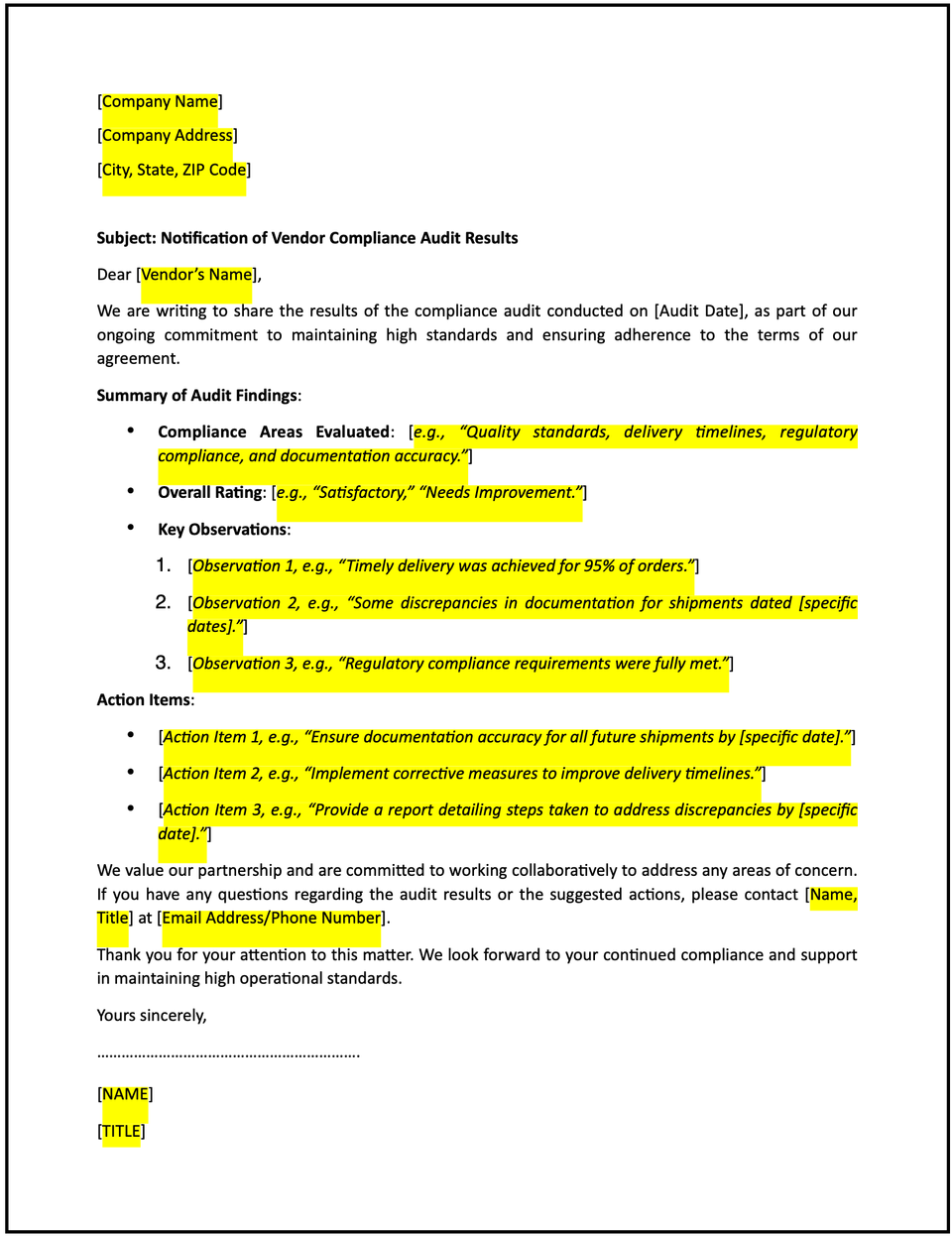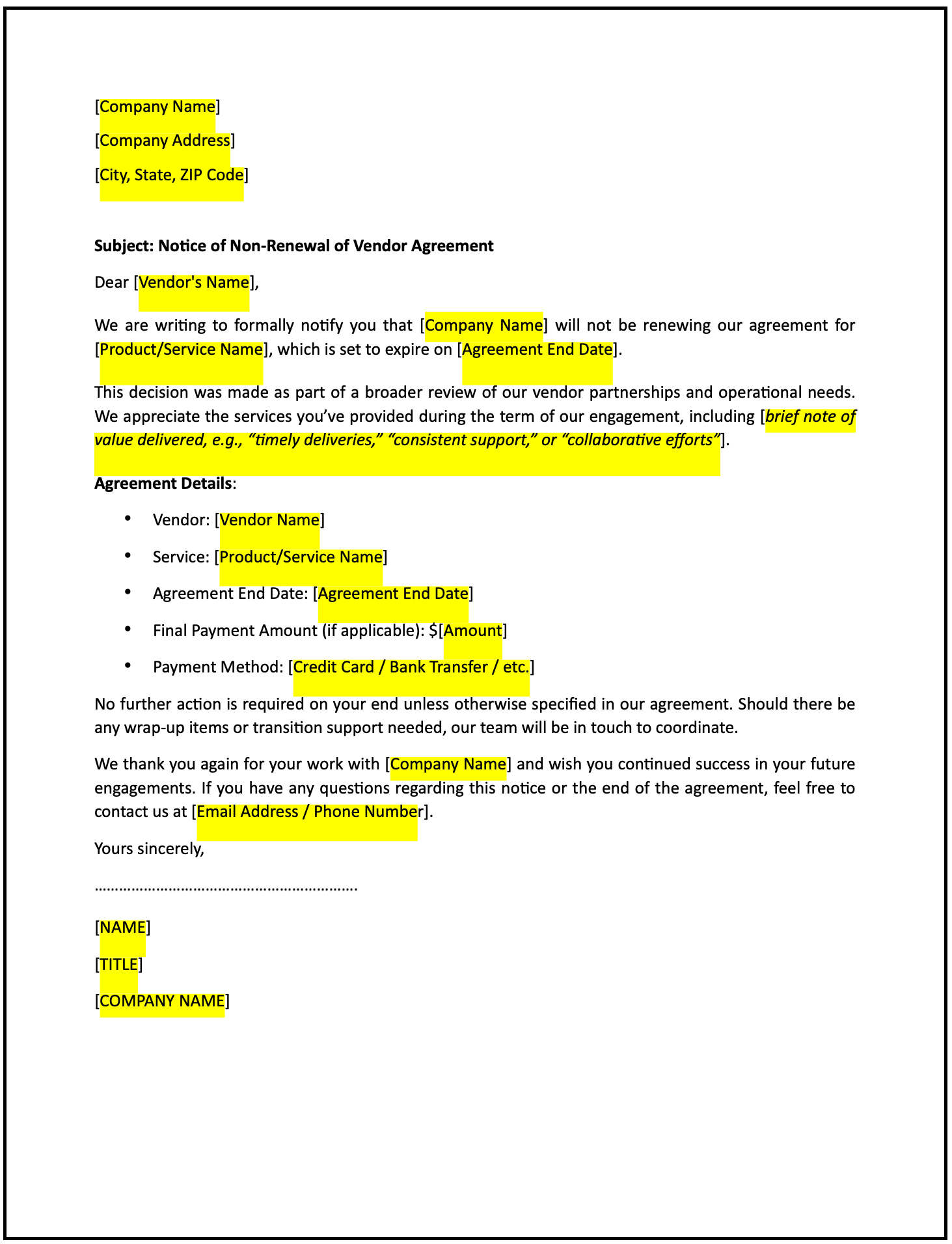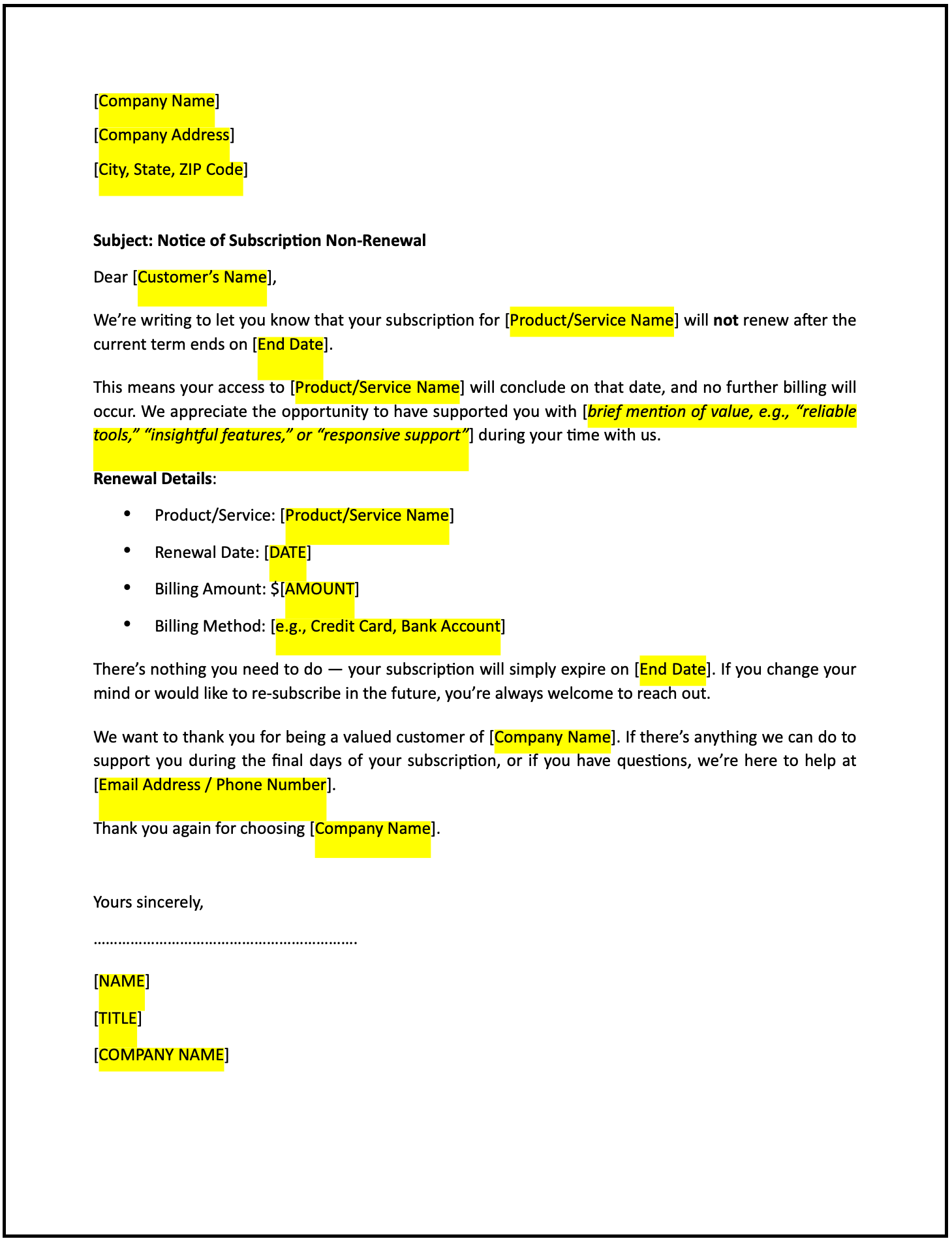Vendor compliance audit results notification letter: Free template

Vendor compliance audit results notification letter
A vendor compliance audit results notification letter is a formal communication used to inform a vendor of the outcomes of a recent compliance audit. It typically outlines areas where the vendor met or exceeded expectations, highlights any deficiencies or gaps identified, and offers recommendations or required corrective actions to support continued compliance and performance improvement.
This letter helps ensure transparency, reinforces accountability, and fosters a collaborative approach to vendor management. It is an essential part of maintaining strong compliance standards and a productive vendor relationship.
How to use this vendor compliance audit results notification letter
- Open with an introduction: Address the vendor respectfully and reference the audit, including the audit date, scope, location, or any relevant project or contractual context.
- State the purpose: Clearly explain that the letter summarizes the results of the recent compliance audit.
- Summarize findings: Provide an overview of the audit results, including specific areas where the vendor demonstrated strong compliance or best practices.
- Highlight deficiencies: If any issues were identified, outline them clearly and connect them to relevant regulations, internal standards, or contractual obligations.
- Offer recommendations: Provide guidance or suggested corrective actions the vendor should take to address the deficiencies or strengthen their compliance practices.
- Reaffirm collaboration: Emphasize the value of the partnership and your intent to continue working together to maintain high compliance standards.
- Maintain a professional tone: Keep the language clear, respectful, and solution-oriented to encourage positive engagement.
- Provide contact information: Include your full name, title, organization, phone number, and email address so the vendor can respond or discuss the findings further.
Benefits of using a vendor compliance audit results notification letter
- Promotes transparency: Sharing results openly reduces ambiguity and fosters shared understanding.
- Reflects professionalism: A structured, formal notification supports quality communication and process integrity.
- Encourages improvement: Providing feedback on deficiencies supports continuous improvement and vendor accountability.
- Builds trust: Open dialogue reinforces a collaborative relationship and long-term reliability.
- Supports compliance oversight: Keeps vendors aligned with your organization’s regulatory, contractual, or operational requirements.
Tips for writing an effective vendor compliance audit results notification letter
- Be specific: Detail audit findings clearly and reference the standards or contractual terms used as benchmarks.
- Use professional language: Maintain a respectful, constructive tone to foster cooperation and engagement.
- Provide context: Explain why the audit was conducted and how the findings impact the vendor relationship.
- Highlight mutual benefits: Emphasize how resolving issues supports a stronger partnership and reduces risk for both parties.
- Include actionable steps: Provide clear instructions on what the vendor needs to do next, including deadlines for corrective actions if required.
- Keep it concise: Focus on key points while ensuring the letter is clear, informative, and professionally presented.
Frequently asked questions (FAQs)
Q: What details should I include in this letter?
A: Include the audit date, scope, summary of findings, areas of compliance, any deficiencies, and recommended actions or follow-up steps.
Q: Should I personalize the letter?
A: Yes. Addressing the vendor by name and referencing the specific audit and engagement details helps maintain a professional and clear tone.
Q: Who typically sends this letter?
A: Compliance officers, quality assurance teams, vendor management leads, or business owners involved in oversight responsibilities.
Q: How formal should this letter be?
A: The tone should be clear, professional, and respectful, balancing constructive feedback with a collaborative approach.
Q: When should this letter be sent?
A: As soon as the audit findings are finalized, ideally within a few business days of audit completion.
Q: Can this letter include a timeline for corrective actions?
A: Yes. Including deadlines for remediation or follow-up actions helps ensure timely compliance and process accountability.
Q: Is acknowledgment from the recipient required?
A: While not mandatory, requesting acknowledgment confirms that the vendor has reviewed the results and is taking appropriate steps.
This article contains general legal information and does not contain legal advice. Cobrief is not a law firm or a substitute for an attorney or law firm. The law is complex and changes often. For legal advice, please ask a lawyer.


